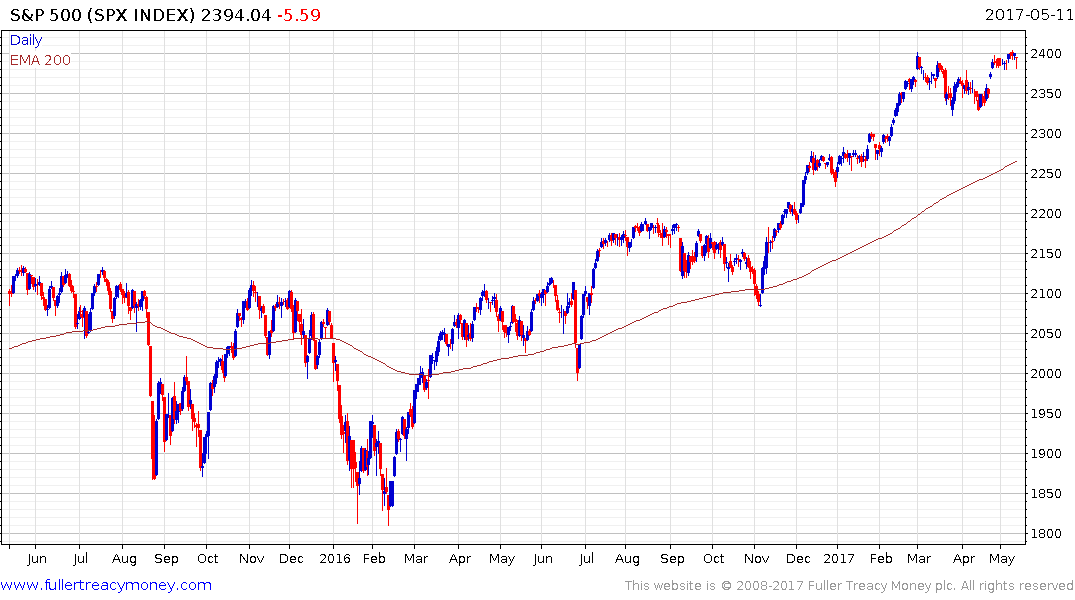1st Quarter Commentary
Thanks to a subscriber for this report from Horizon Kinetics which I found highly informative and commend to subscribers. Here is a section:
What’s this about? Paradoxically, it’s an unintended consequence of Vanguard’s strategy of driving fees on bread-and-butter indexes like the S&P 500 and the Russell 1000 down to the 5 basis point range. Advisors – whether human or robot – are not going to guide investors there; they can’t live on 5 basis points. And since for-profit fund companies can’t compete with Vanguard head to head on the S&P 500 battlefield, they will collect their higher fees elsewhere. Through product differentiation. Ergo, not only the oft-mentioned iShares Frontier Index, with a 79 basis point expense ratio, and the Italy ETF, with a 48 basis point fee, but also smart beta funds.
The challenge to the rational practice of indexation is the profit motive. Index funds are, by definition, commod-itized products: one S&P 500 or Russell 1000 fund can be no different than another. And it is wholly rational that the for-profit companies that promote index funds try to avoid selling near-zero-fee products. The use of market-ing to promote the sense of product differentiation to the customer in order to secure a higher price is not new: it’s done for vodka, cigarettes and shampoo. As the examples above illustrate, the ETF industry has hijacked tra-ditional indexation and distorted it to a dangerous degree. One cannot even be sure that when one buys a country fund, one even gets that country.
The Unavailability of Alternative Asset Classes/Sectors
Let’s suppose that it dawned on some modest proportion of investors that, though they thought they were at-tending an academic symposium, they were actually in the midst of what had devolved into a wild party. They decided it was time to leave. To go where? Small-capitalization stocks, a traditional alternative, are no longer a practical alternative. Because of the $1+ trillion that has flowed into ETFs since the Financial Crisis, in practical terms, ETF organizers could only accommodate this magnitude of demand with stocks that have substantial trading liquidity. They necessarily promoted large-capitalization indexes. Accordingly, over 80% of the stock market is invested in large-cap stocks (greater than $10 billion). Only 4.6% of the stock market, by value, are companies less than $2 billon in size. They simply cannot absorb a sufficient portion of the equity pool; they cannot be a functional alternative.
Here is a link to the full report.
I think it is safe to say low fees are an unabashed positive development from the perspective of investors. Gaining access to major indices, deemed to represent the benchmark for market performance, at a low price is good enough for the vast majority of investors. The reason so many pundits are now talking about the trend into passive funds is twofold.
The first is that active managers, not least because of fees, have difficulty outperforming at the best of times so passive management represents a threat to their business models. The second is more important because Indexation depends on liquidity and therefore boosts demand for large shares. I took the constituents of the S&P500 and ranked them by market cap. The top-5 holdings represent 13.05% of the Index, the top-10 represent 20.63% and the top-20 represent 30.49%. Companies like Apple and Facebook have also been among the best performers this year which further concentrates investment in large caps.
By making it easier to access markets, opportunities for diversification have decreased but the flow of funds into the stock market is a primary source of fuel for the bull market. The concentration of capital in major ETFs will eventually contribute to a large source of potential supply but the much bigger question right now is whether this trend of asset accumulation has ended?

The S&P 500 has been largely inert for two weeks but is holding in the region of its early March peak. So far, this has been a very orderly uptrend since the early 2016 lows and a break in the progression of higher reaction lows would be required to even begin to question uptrend consistency.


